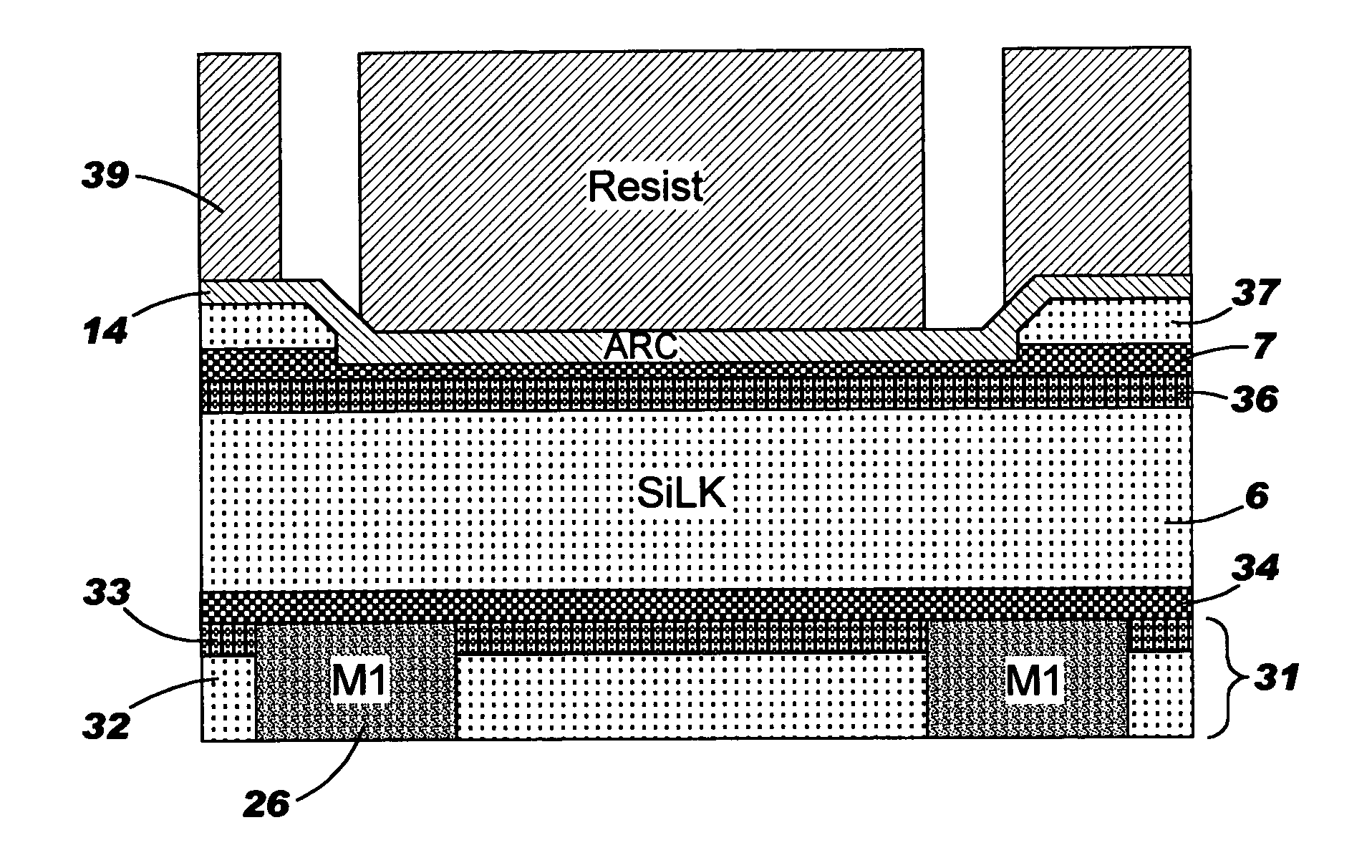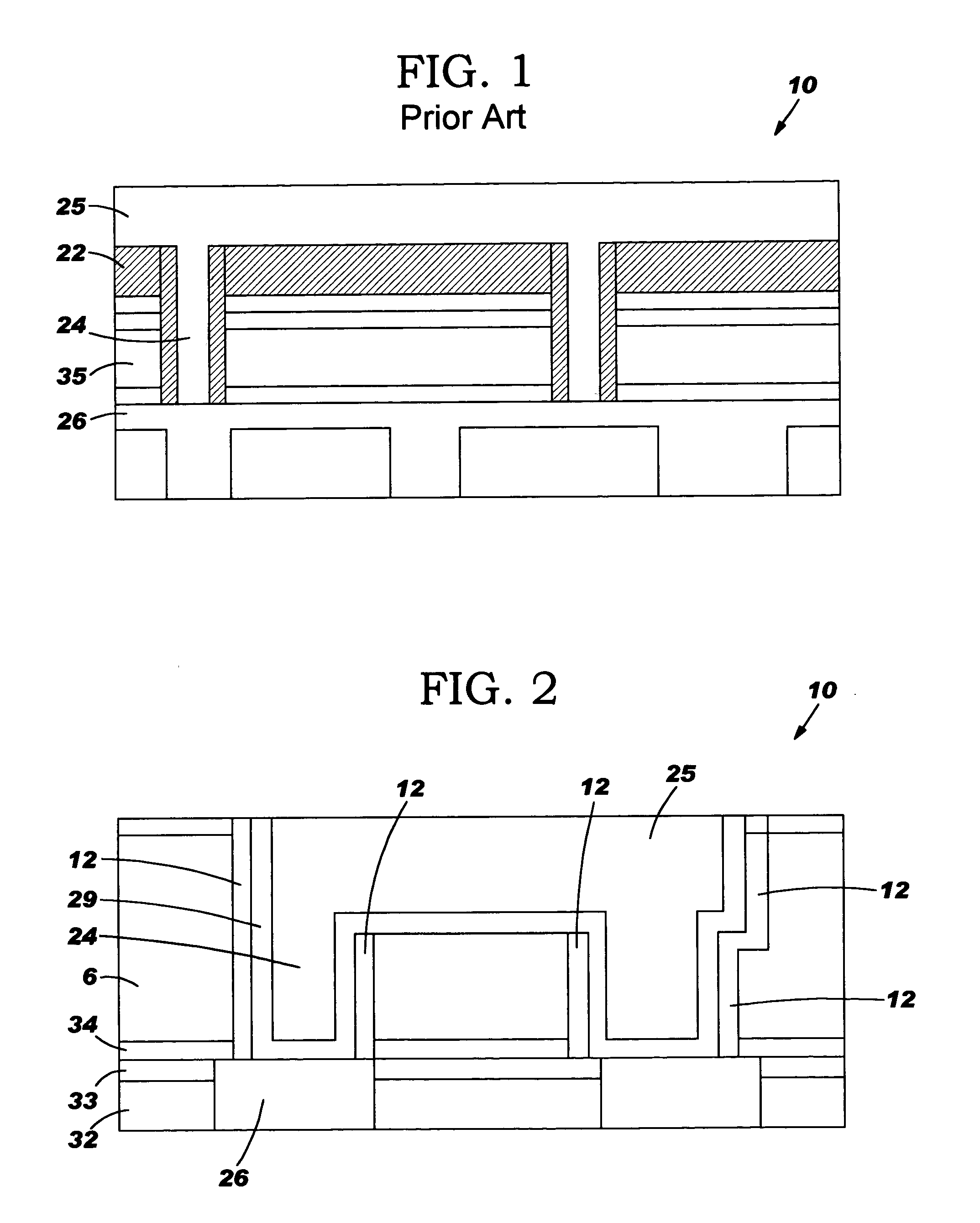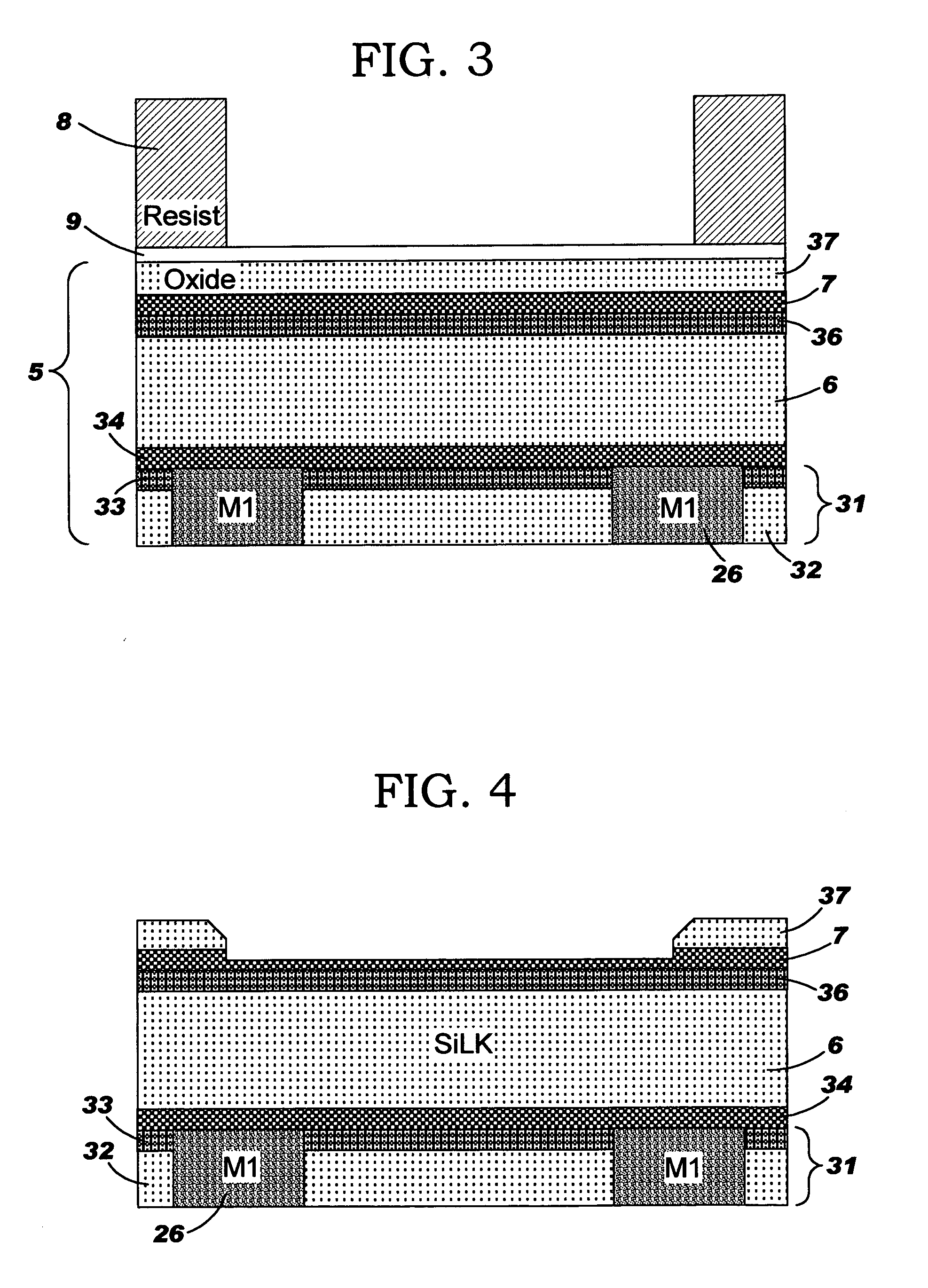Sacrificial inorganic polymer intermetal dielectric damascene wire and via liner
a dielectric damascene and inorganic polymer technology, applied in the direction of semiconductor devices, semiconductor device details, electrical apparatus, etc., can solve the problems of low mechanical strength, easy cracking, and lack of mechanical rigidity, and achieve the effect of thermal mechanical stress
- Summary
- Abstract
- Description
- Claims
- Application Information
AI Technical Summary
Benefits of technology
Problems solved by technology
Method used
Image
Examples
Embodiment Construction
[0040] An interconnect structure, and method of forming thereof, will now be discussed in greater detail referring to the drawings accompanying the present invention. It is noted in the accompanying drawings like and corresponding elements are referred to by like reference numbers. Although the drawings show the presence of two wiring layers, the present invention is not limited to low resistance interconnect structures having only two wiring layers. Instead, the present invention works equally well with interconnect structure having a plurality of wiring levels, one over the other, in which a liner material enhances the rigidity of low-k dielectrics.
[0041] The present invention provides low resistance via interconnects through rigid low-k interlevel and intralevel dielectric layers. In one embodiment of the present invention, the rigidity of low-k dielectric layers in the interconnect structures is increased by a thin mechanically rigid liner lining the sidewall of a via opening i...
PUM
| Property | Measurement | Unit |
|---|---|---|
| dielectric constant | aaaaa | aaaaa |
| thickness | aaaaa | aaaaa |
| thickness | aaaaa | aaaaa |
Abstract
Description
Claims
Application Information
 Login to View More
Login to View More - R&D
- Intellectual Property
- Life Sciences
- Materials
- Tech Scout
- Unparalleled Data Quality
- Higher Quality Content
- 60% Fewer Hallucinations
Browse by: Latest US Patents, China's latest patents, Technical Efficacy Thesaurus, Application Domain, Technology Topic, Popular Technical Reports.
© 2025 PatSnap. All rights reserved.Legal|Privacy policy|Modern Slavery Act Transparency Statement|Sitemap|About US| Contact US: help@patsnap.com



